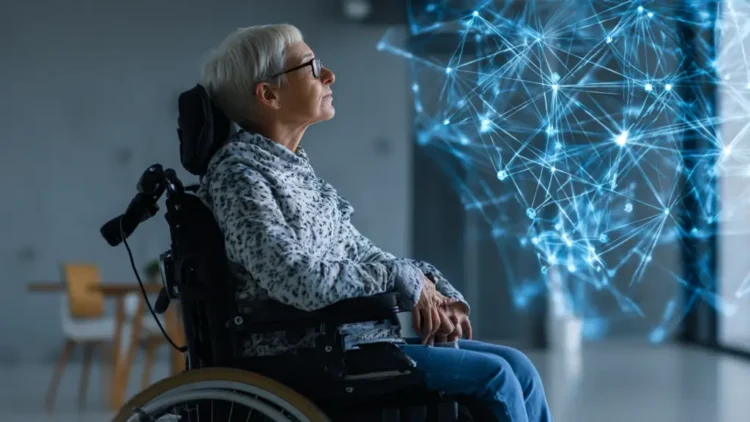In a groundbreaking development, scientists have harnessed the power of artificial intelligence (AI) to aid individuals with neurological conditions in controlling electric wheelchairs using nothing more than brain waves. This promising technology could significantly improve the quality of life for many, offering a newfound sense of independence and mobility.
How Does It Work?
The technology behind this innovation involves a brain-computer interface (BCI). A BCI is a direct communication pathway between the brain and an external device. In this case, it means users can control an electric wheelchair through thought alone. The system works by placing sensors on the user’s scalp. These sensors detect the brain’s electrical signals, which are known as brain waves.
Once the brain waves are detected, the AI comes into play. The AI processes these signals and translates them into commands that the wheelchair can understand. It’s quite similar to how we use our hands to guide a joystick, but in this case, it’s our thoughts guiding the chair.
The Science Behind It
The concept might sound like it’s coming straight out of a science fiction movie, but it’s based on real and advanced science. The human brain is a powerful organ that continuously sends out electrical signals. Researchers have learned to interpret these signals with AI algorithms, making it possible to transform them into practical commands.
The AI is trained to understand different patterns of brain activity that correspond to different commands. For example, thinking about moving forward would produce a different pattern than thinking about stopping. Over time, the AI becomes more accurate in its interpretation, leading to more efficient wheelchair control.
Who Will Benefit?
Individuals with conditions such as spinal cord injuries, multiple sclerosis, or certain types of paralysis could find immense benefit from this technology. Traditional electric wheelchairs often require some physical effort, whether it’s moving a joystick or pushing levers. For those unable to perform these actions, the brain-controlled wheelchair offers a remarkable alternative.
Beyond mere control, the psychological impact is also noteworthy. Being able to move independently can boost self-esteem and provide a sense of autonomy for those who might otherwise rely on caregivers for mobility.
Challenges and Future Prospects
While the technology is promising, there are hurdles to overcome. One primary challenge is ensuring the accuracy and reliability of the AI interpretations. Brain wave patterns can vary greatly between individuals and even day-to-day for the same person. Researchers are continually improving the AI’s ability to adapt to these variations.
Another challenge is the accessibility and cost of the technology. Developing a commercially viable product that can be readily available to those who need it is the ultimate goal. As research progresses, we can expect the cost to decrease, making it more accessible to the public.
As this technology evolves, it could also extend beyond wheelchairs. Similar brain-controlled systems could be applied to prosthetics or other assistive devices, further enhancing the independence of individuals with disabilities.
A New Era of Independence
The synthesis of AI and brain-computer interfaces marks the beginning of a new era for assistive technology. This innovation not only has the potential to transform mobility solutions but also to bring about a new wave of technologies that enhance human capabilities.
As researchers continue to refine this groundbreaking technology, the future looks promising. Increased independence and a higher quality of life are becoming more attainable for people with neurological conditions. Through continuous effort and innovation, AI remains a beacon of hope, illuminating paths that were once thought impossible.










